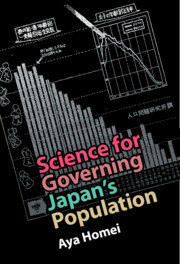Refine search
Actions for selected content:
10296 results in History of science: general interest
11 - The Contemplation of the Past in the Libellus Precum of Faustinus (and Marcellinus)
-
-
- Book:
- Writing History in Late Antique Iberia
- Published by:
- Amsterdam University Press
- Published online:
- 18 April 2023
- Print publication:
- 15 November 2022, pp 201-222
-
- Chapter
- Export citation
15 - The Image of Leovigild as Arian Monarch in the ‘Vitas Patrum Emeritensium’ : From Historical Reality to Hagiographical Deformation
-
-
- Book:
- Writing History in Late Antique Iberia
- Published by:
- Amsterdam University Press
- Published online:
- 18 April 2023
- Print publication:
- 15 November 2022, pp 293-306
-
- Chapter
- Export citation
5 - Orosius, Barbarians, and the Christian Success Story
-
-
- Book:
- Writing History in Late Antique Iberia
- Published by:
- Amsterdam University Press
- Published online:
- 18 April 2023
- Print publication:
- 15 November 2022, pp 85-100
-
- Chapter
- Export citation
12 - Orthodoxy and Heterodoxy : The Historiography of Hispania in Late Antiquity
-
-
- Book:
- Writing History in Late Antique Iberia
- Published by:
- Amsterdam University Press
- Published online:
- 18 April 2023
- Print publication:
- 15 November 2022, pp 223-242
-
- Chapter
- Export citation
Frontmatter
-
- Book:
- Writing History in Late Antique Iberia
- Published by:
- Amsterdam University Press
- Published online:
- 18 April 2023
- Print publication:
- 15 November 2022, pp 1-4
-
- Chapter
- Export citation
6 - Prophecies and Omens of the Fall of the Roman Empire in the Chronicle of Hydatius of Lemica
-
-
- Book:
- Writing History in Late Antique Iberia
- Published by:
- Amsterdam University Press
- Published online:
- 18 April 2023
- Print publication:
- 15 November 2022, pp 101-116
-
- Chapter
- Export citation
Innovations from the Levant: smallpox inoculation and perceptions of scientific medicine
-
- Journal:
- The British Journal for the History of Science / Volume 55 / Issue 4 / December 2022
- Published online by Cambridge University Press:
- 11 November 2022, pp. 423-444
- Print publication:
- December 2022
-
- Article
-
- You have access
- Open access
- HTML
- Export citation

Science for Governing Japan's Population
-
- Published online:
- 10 November 2022
- Print publication:
- 17 November 2022
-
- Book
-
- You have access
- Open access
- Export citation
Islamic philosophy and the globalization of science: Ahmed Cevdet's translation of the sixth chapter of Ibn Khaldun's Muqaddimah
-
- Journal:
- The British Journal for the History of Science / Volume 55 / Issue 4 / December 2022
- Published online by Cambridge University Press:
- 31 October 2022, pp. 459-475
- Print publication:
- December 2022
-
- Article
- Export citation
Allan Esterson and David C. Cassidy, Einstein's Wife: The Real Story of Mileva Einstein-Marić Cambridge, MA: MIT Press, 2019. Pp. 336. ISBN: 978-0-2625-3897-8. $19.95 (paperback). ISBN: 978-0-2620-3961-1. $29.95 (hardback).
-
- Journal:
- The British Journal for the History of Science / Volume 55 / Issue 4 / December 2022
- Published online by Cambridge University Press:
- 28 October 2022, pp. 531-533
- Print publication:
- December 2022
-
- Article
- Export citation
Chapter 2 - The Science of Language:
-
- Book:
- Birdsong, Speech and Poetry
- Published online:
- 15 September 2022
- Print publication:
- 22 September 2022, pp 38-59
-
- Chapter
- Export citation
Acknowledgements
-
- Book:
- Birdsong, Speech and Poetry
- Published online:
- 15 September 2022
- Print publication:
- 22 September 2022, pp ix-x
-
- Chapter
- Export citation
Dedication
-
- Book:
- Birdsong, Speech and Poetry
- Published online:
- 15 September 2022
- Print publication:
- 22 September 2022, pp v-vi
-
- Chapter
- Export citation
Chapter 4 - ‘Undersong’
-
- Book:
- Birdsong, Speech and Poetry
- Published online:
- 15 September 2022
- Print publication:
- 22 September 2022, pp 101-136
-
- Chapter
- Export citation
Notes
-
- Book:
- Birdsong, Speech and Poetry
- Published online:
- 15 September 2022
- Print publication:
- 22 September 2022, pp 185-216
-
- Chapter
- Export citation
Index
-
- Book:
- Birdsong, Speech and Poetry
- Published online:
- 15 September 2022
- Print publication:
- 22 September 2022, pp 233-236
-
- Chapter
- Export citation
Contents
-
- Book:
- Birdsong, Speech and Poetry
- Published online:
- 15 September 2022
- Print publication:
- 22 September 2022, pp vii-vii
-
- Chapter
- Export citation
Figures
-
- Book:
- Birdsong, Speech and Poetry
- Published online:
- 15 September 2022
- Print publication:
- 22 September 2022, pp viii-viii
-
- Chapter
- Export citation
Chapter 5 - ‘We Teach ’Em Airs That Way’
-
- Book:
- Birdsong, Speech and Poetry
- Published online:
- 15 September 2022
- Print publication:
- 22 September 2022, pp 137-179
-
- Chapter
- Export citation
Bibliography
-
- Book:
- Birdsong, Speech and Poetry
- Published online:
- 15 September 2022
- Print publication:
- 22 September 2022, pp 217-232
-
- Chapter
- Export citation
